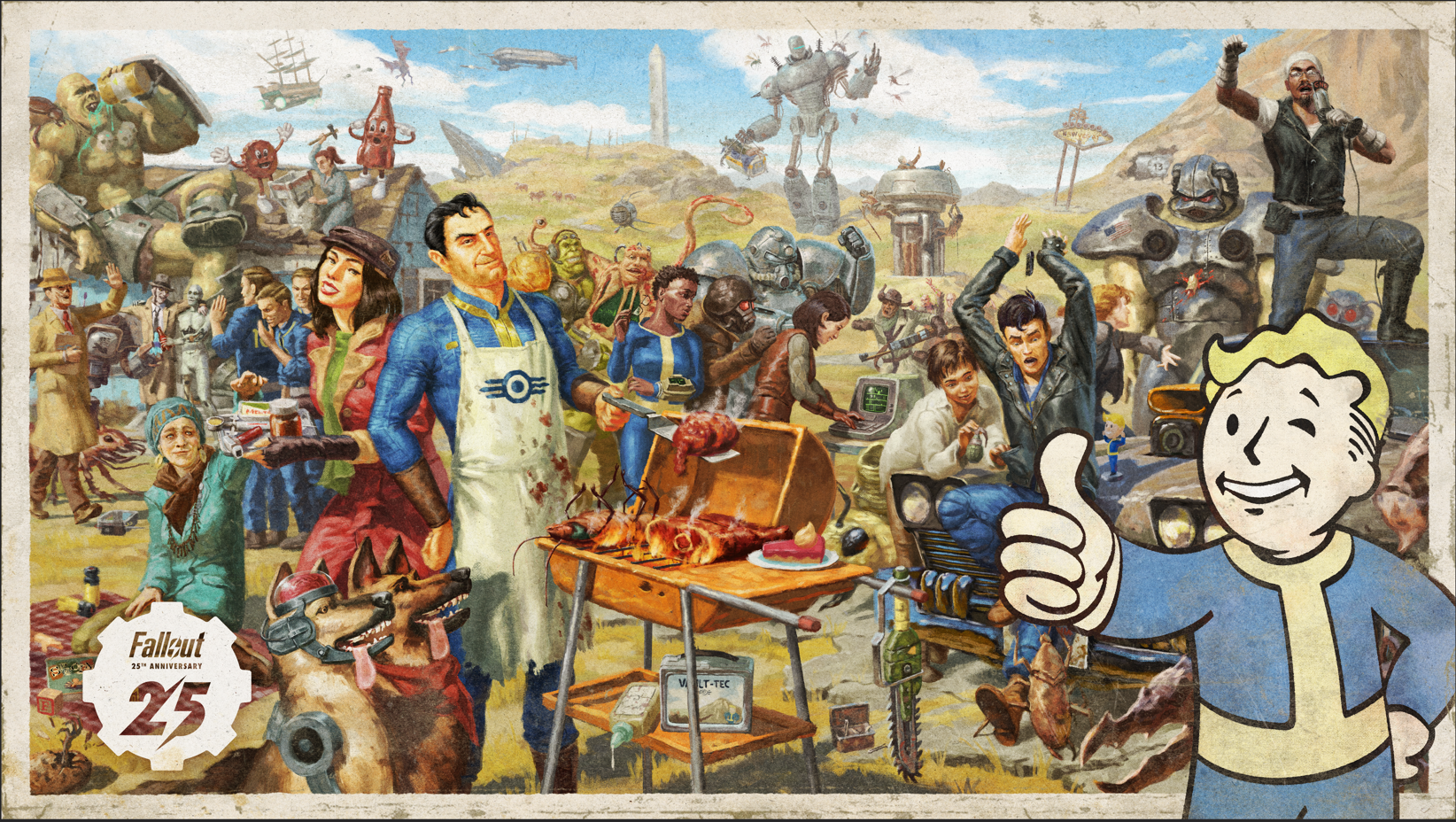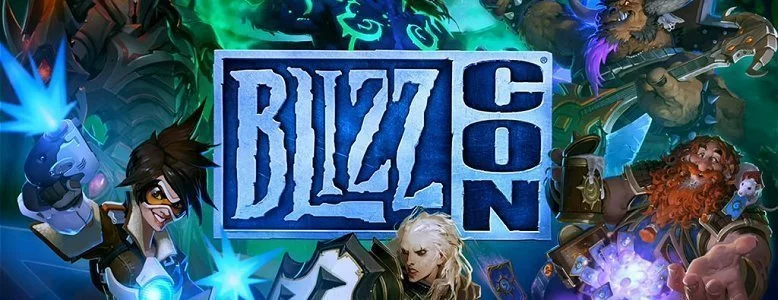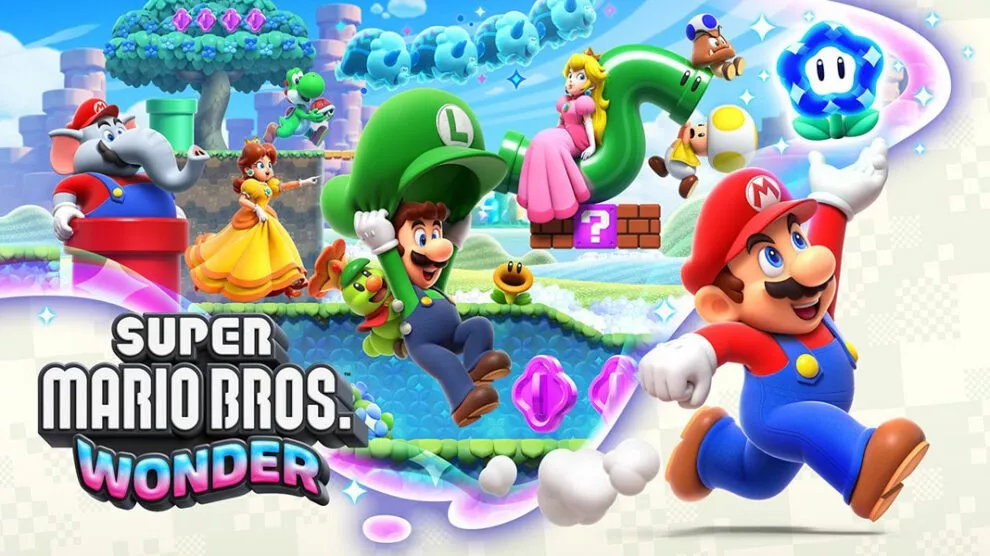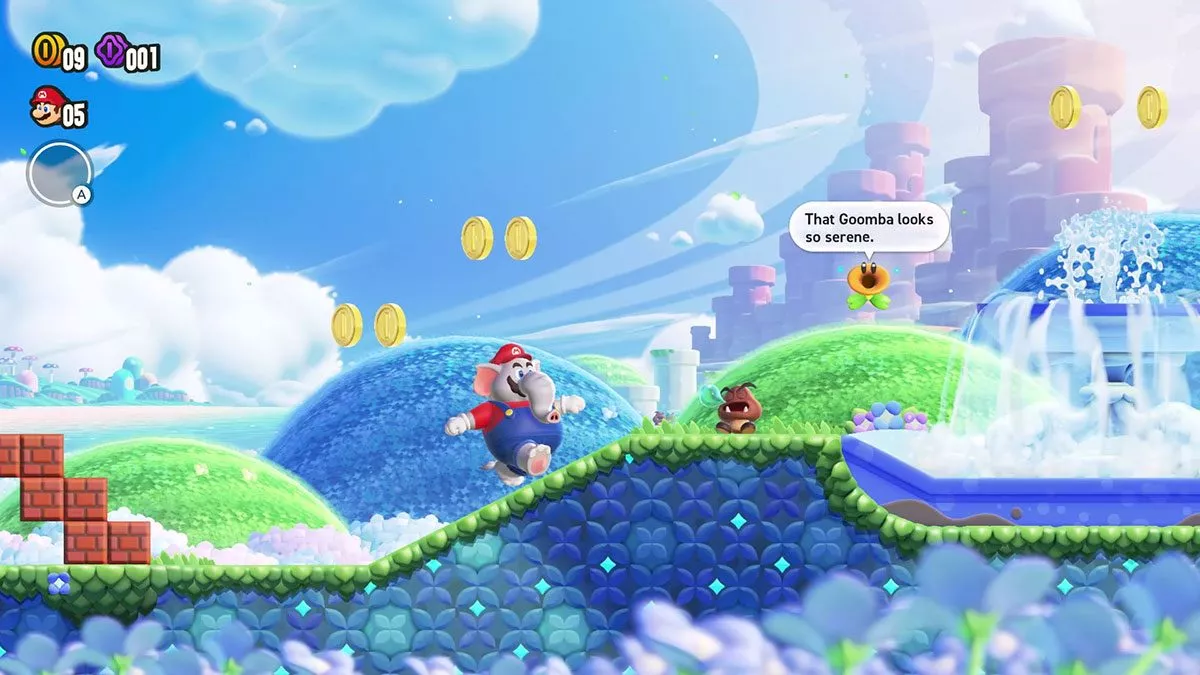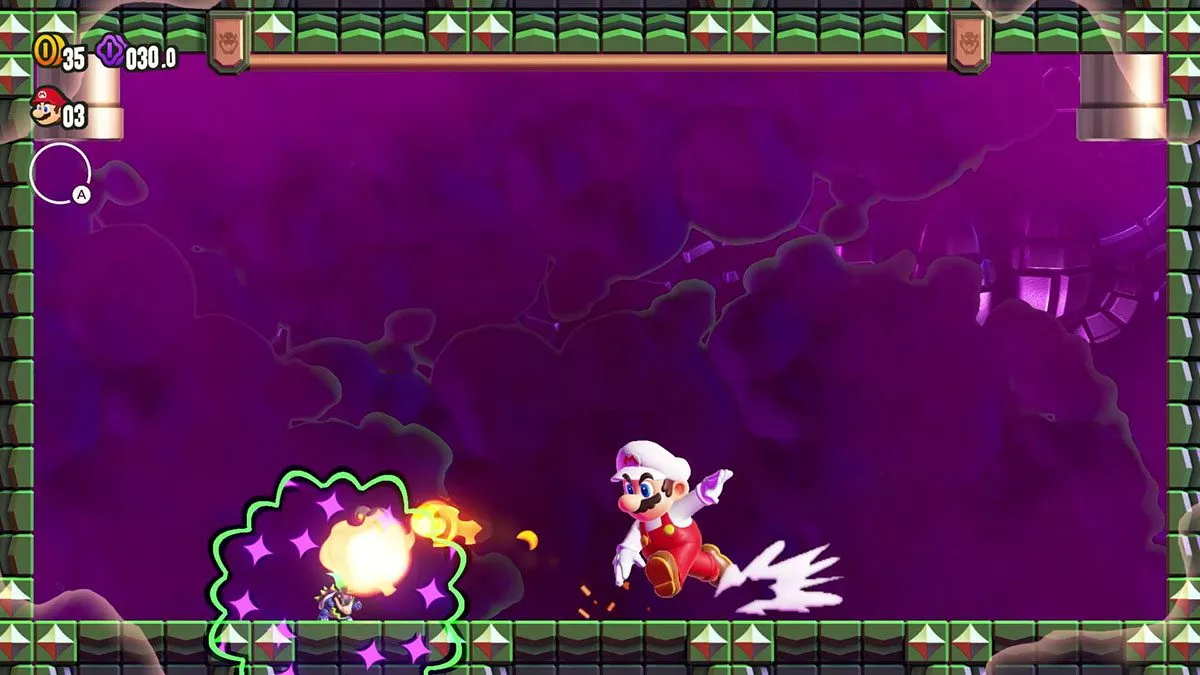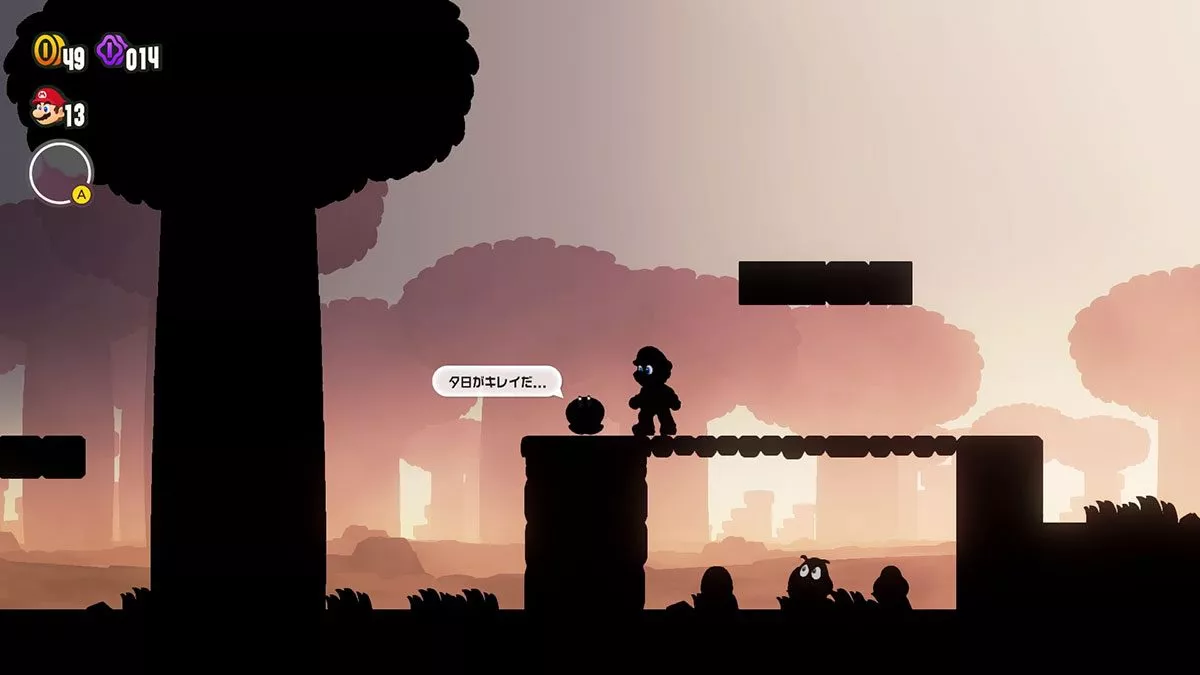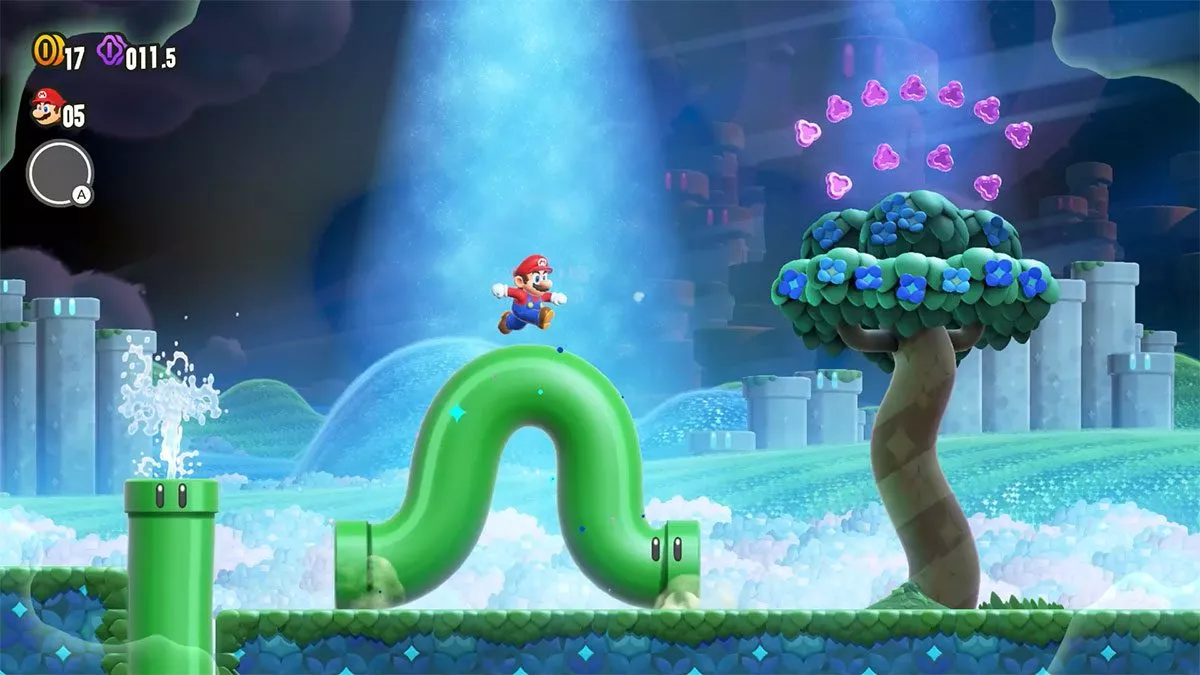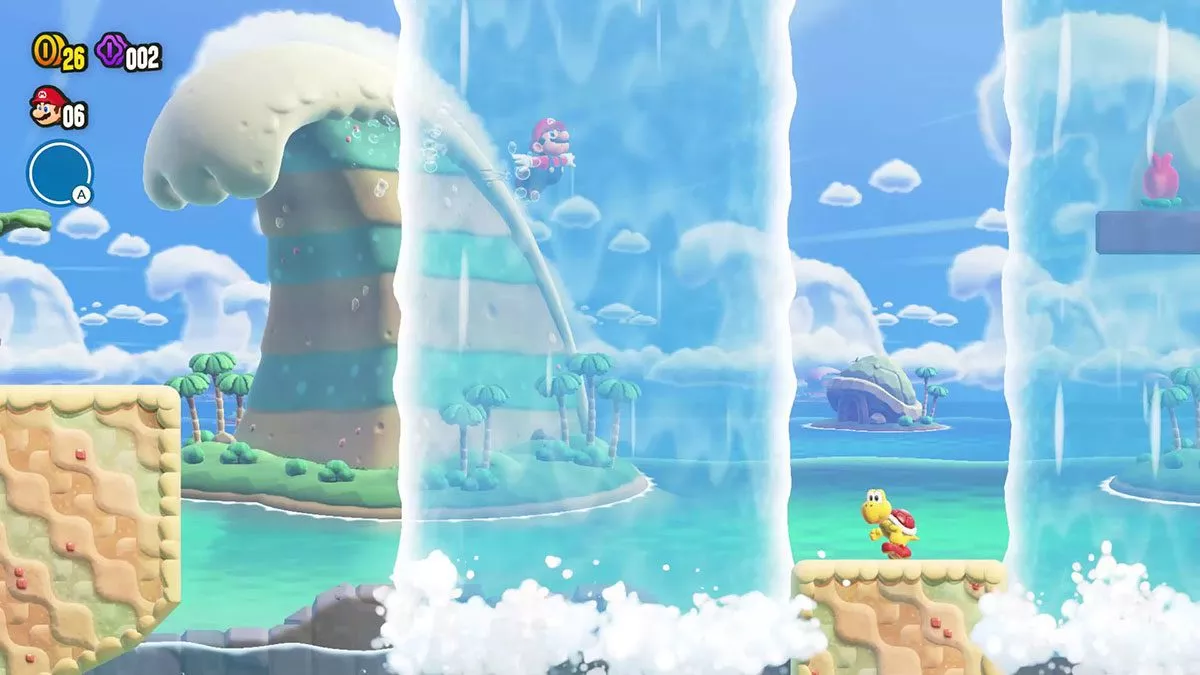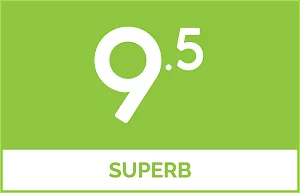Mario remains on the top of his game, with plenty of new surprises.
Super Mario Bros Wonder returns to the portly plumber’s traditional 2D side-scrolling, level-based, roots for the first time in a decade; at least properly. We’ve had re-releases and a double dose of choosing our own adventure in Super Mario Maker, but haven’t had a proper New Super Mario game that was actually new since the Wii U’s launch in 2012.
Super Mario Bros Wonder is a new Mario game, but it’s not New Super Mario Bros. It returns to the classic side-scrolling formula, but has a greater emphasis on charm and character than the New series. It feels like the modern incarnation of Mario as he was in the early-mid-90s.
Those parallels exist beyond the game, of course. Mario has held his stature in pop culture for almost 40 years. But it was on another level when he was the face of schoolyard squabbles at the height of 2D gaming. With the enormous success of the Super Mario Bros Movie, it feels right that the Mario Bros have recaptured some of their cheeky charm, as Wonder removes the coat of cleanliness that ensconced the New Super Mario Bros series.
Key to that is excellent level design and their scattered placement throughout all worlds – up there with the best in Mario’s 2D history. The opening jaunts predictably serve as a tutorial and refresher for those who haven’t reached the castle in a long while. After that, it does a much better job than previous instalments at mixing and matching its pacing, difficulty and even objective.
Courses in each world range from very easy to genuinely challenging. Wonder intentionally leads your opinion by presenting a level’s difficulty on a five-star scale before you set foot in each isolated adventure. There’s no more waiting until the final worlds to be put to the test, but you also never go in blind. The rating system is fairly accurate, with only one or two levels feeling mismatched to their indicator.
In simple terms, you’re always trying to reach the final objective – this is a still a 2D Mario game. But it’s not just reaching the final flag and nabbing three big coins along the way. Okay, so that’s most courses – but they’re broken up by shorter challenges either tied to the new badge mechanic or the Wonder Flowers.
The former gives Mario an additional permanent ability, alongside the 4 main power-ups – the fire flower, drill, bubble flower, and hefty newcomer elephant Mario. Some are bought for coins, but most are unlocked by completing specific levels designed to use the new ability to reach an otherwise unobtainable goal.
I enjoyed them most during these purpose-built stages. Otherwise, I defaulted to the parachute cap, which slows Mario’s decent and is the first badge unlocked. New players – and there will be many – may find them intuitive and switch to the most effective badge before each level. But as an old-timer, they tended to conflict with my Mario muscle memory, so were best left unused. That’s a perfectly valid way to play as well, and besides the badge challenges, I can’t recall anything out of reach without engaging a badge power-up.
Badges aren’t the only way to make some parts of Super Mario Bros Wonder easier for newer players. The incessant ridicule of Super Guide is gone, but with the whole cast along for the ride, some dissolve the difficulty. Any of Mario, Luigi, Peach and Daisy are playable, along with a bunch of Toads.
Meanwhile, Nabbit and Yoshi provide the easy mode; they don’t take damage but can’t use power-ups. Through those concessions, Super Mario Bros Wonder remains an accessible game for more casual and very young (and possibly old) players, but addresses the main criticism of past instalments by including a greater challenge for those who play without the assists.
That challenge flows through to the Wonder Flowers, which on the surface exclaim colourful Nintendo gimmick. But their influence goes deep into why Super Mario Bros Wonder has so much more personality. The flowers unlock new paths and are the primary hidden collectible throughout most levels.
Triggering the hidden Wonder Flower will drastically change the landscape and the state of play, with what is generally a much more testing scenario. The level will remain in its alternate reality until you either grab the Wonder Flower or die trying; expect the unexpected. The level designs on their own are good, but it’s the Wonder Flower integration that makes most of them great. It allows a string of levels about going from left to right to stamp their own identity on Mario’s wonderful adventure.
It’s all capped off by the expressive cast and vibrant Nintendo visuals that manage to feel modern on a handheld-console approaching its 7th birthday. Mario games always look good. But with shape shifting worlds, emotive characters, fluid motion and snappy loading screens between levels, it doesn’t feel like ageing hardware at all – it’s easily the best-looking Mario game.
The chatty flowers that occupy most levels are where things start to get a little unusual for long-time players. I was initially ambivalent, but they soon faded into the festive backgrounds. They don’t add anything to gameplay, but do make the worlds feel friendly, so they aren’t just Mario and the creatures he squashes. If it’s not to your taste, the voices can be turned off or switched to text only. I suspect North American players will find them endearing, while English-speakers elsewhere may find their heavy American accents a stark contrast to Mario’s thick Italian tones.
Those tones are new for the first time, with Mario and Luigi’s voice actor since Super Mario 64, Charles Martinet, retiring prior to Wonder. Nintendo was less vocal on the new leading man, but has since confirmed Kevin Afghani is portraying the brothers.
There’s been a lot of scrutiny for what is ultimately a few lines of dialogue for each character – the American flowers talk a lot more. He does a great job with his own respectful and identifiable portrayal of the Super Mario brothers. They don’t suddenly sound like Chris Pratt and Charlie Day – they’re still faithful to Martinet’s characterisation; just sounding younger with a slightly expanded range, which is a strong match for the more expressive faces.
You can swap between the characters in single-player at any time, but it doesn’t make any difference. Aside from the easy mode options, they all play the same. That may disappoint older fans, as the Mushroom Kingdom characters’ traditional strengths and weaknesses may have made some levels play out differently. But with the badge system offering those original perks – and many more – that’s been superseded; pick and stick with your favourite.
That leaves the ensemble’s primary purpose to allow multiplayer for up to 4 players. You can play locally or online with friends – but that requires the laborious process of getting people together through the Switch’s clunky online functionality, which in our pre-release tests proved too difficult to be worthwhile.
Dabbling online reinforces these courses all play best in single-player. I much preferred co-op in Super Mario 3D World + Bower’s Fury, and found their charm was largely lost in races to the finish. It may be a convenient way to keep all the kids entertained at once, but for those of us with the NES or SNES (or hell, the DS) stages memorised, Wonder is best played solo.
Super Mario Bros Wonder is a resounding success. It reboots a 2.5D reboot, with far more personality and the best balance and pacing in the modernised side-scrolling Super Mario Bros series. The levels are well designed in their own right, but they combine magnificently with the power-ups, new badge abilities and Wonder Flowers, which momentarily change the landscape and objective. Together they refresh an ageless formula, with enough challenge for long-time players and the right amount of assistance for newcomers. In the hybrid handheld-console’s final act, it also delivers one of the best looking and running games on the Switch. Super Mario Bros is as good as it’s ever been in 2023; it really is a wonder.
Super Mario Bros Wonder was reviewed using a promotional code on Nintendo Switch provided by the publisher. Click here to learn more about Stevivor’s scoring scale.
This article may contain affiliate links, meaning we could earn a small commission if you click-through and make a purchase. Stevivor is an independent outlet and our journalism is in no way influenced by any advertiser or commercial initiative.


